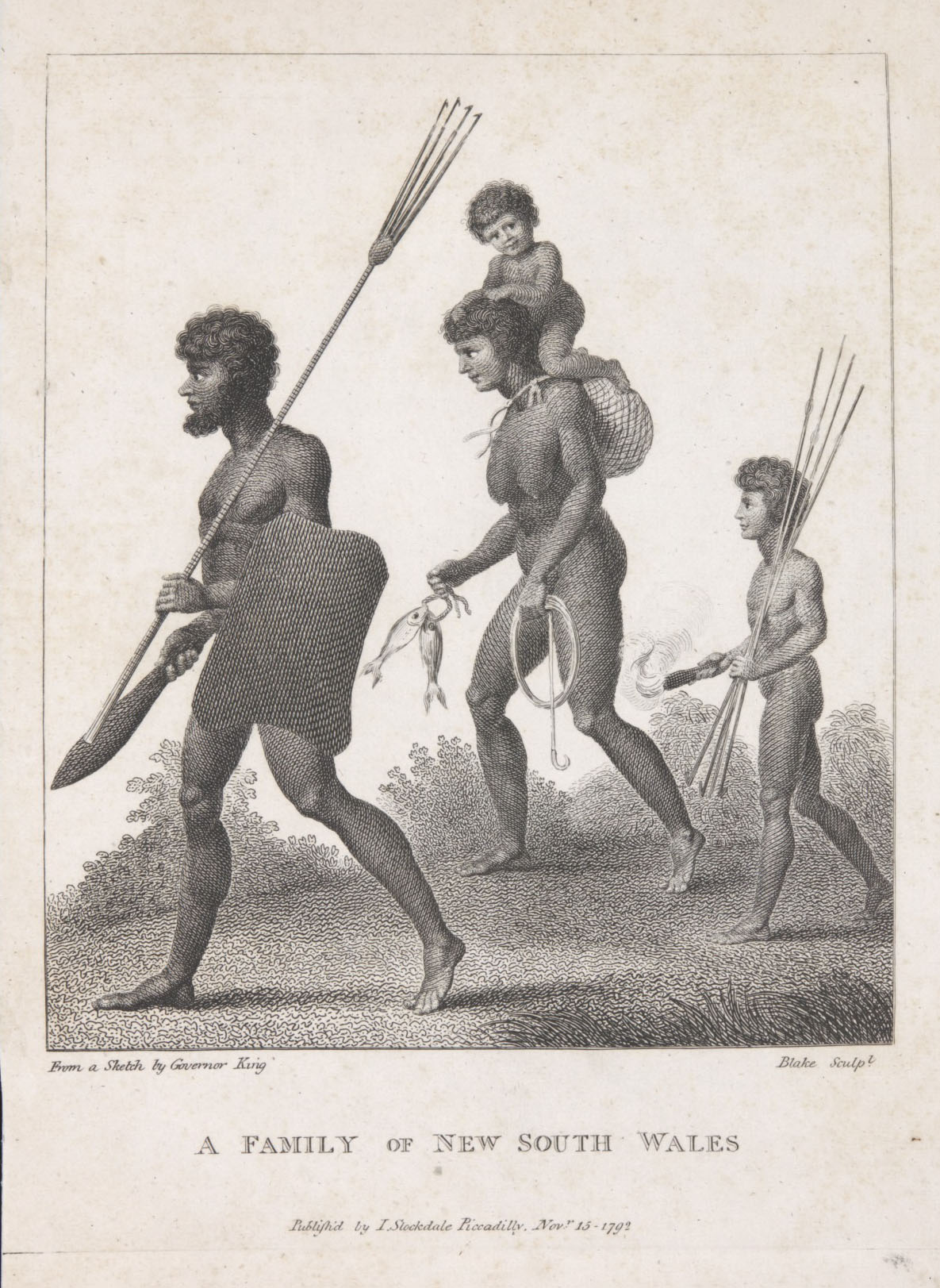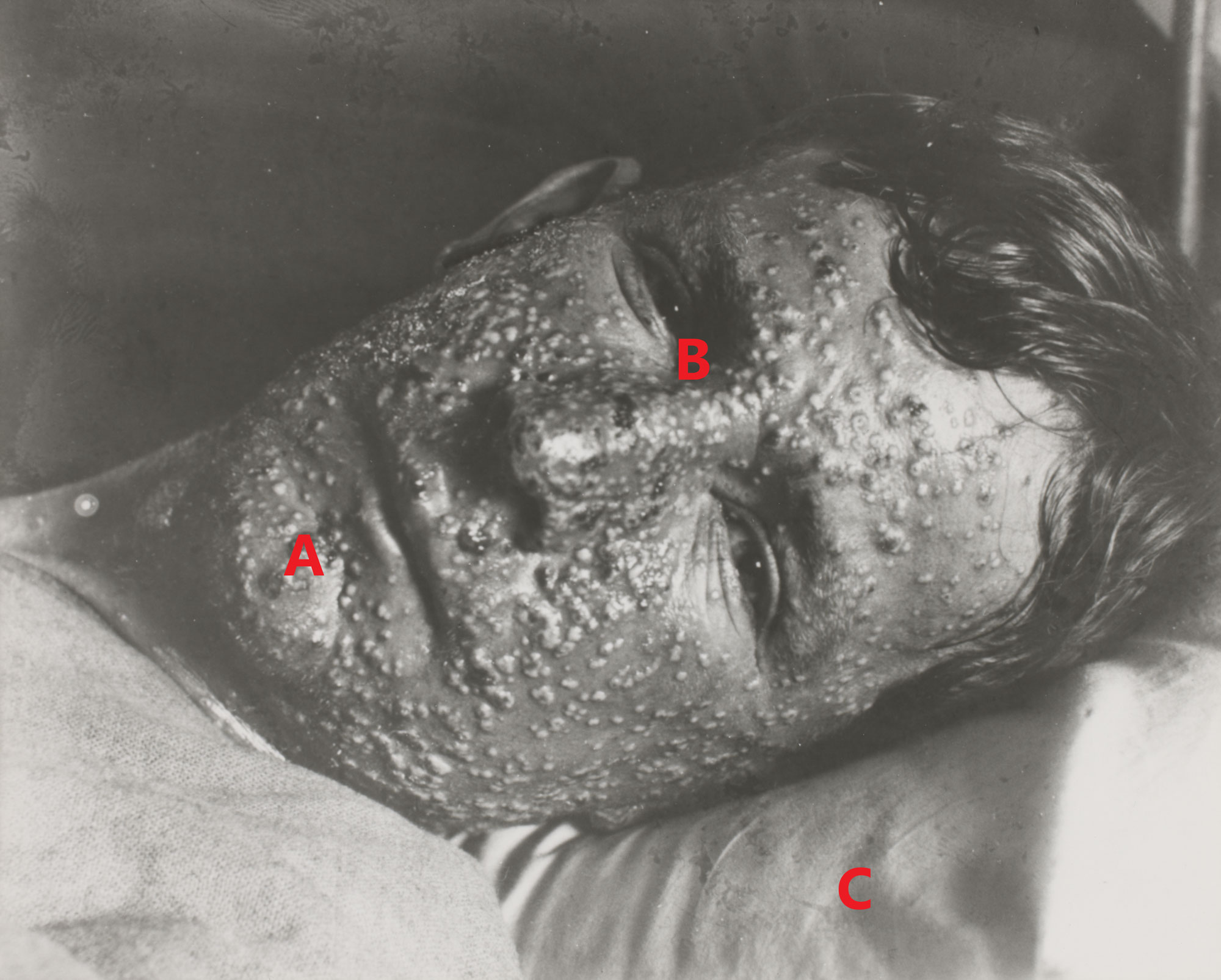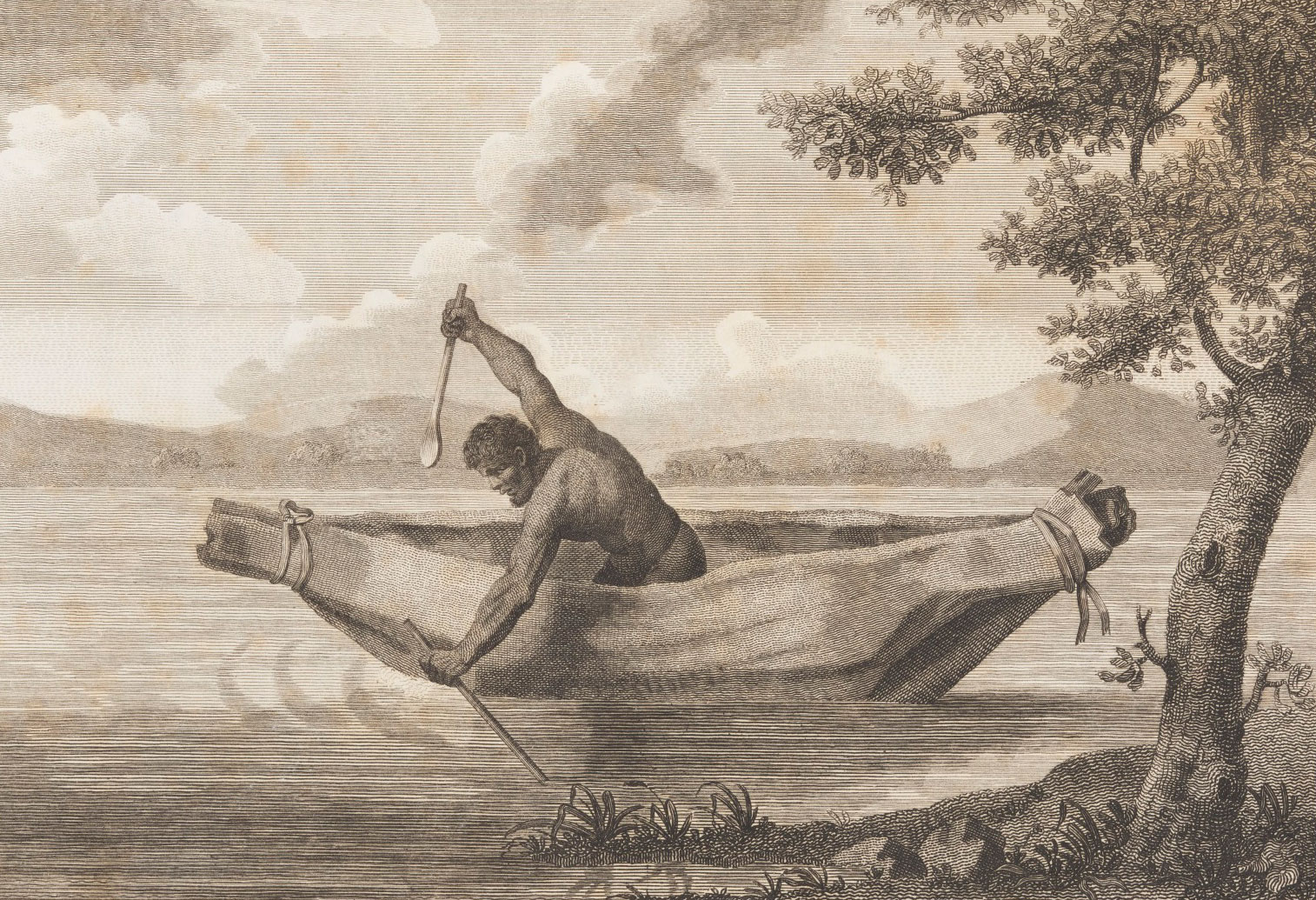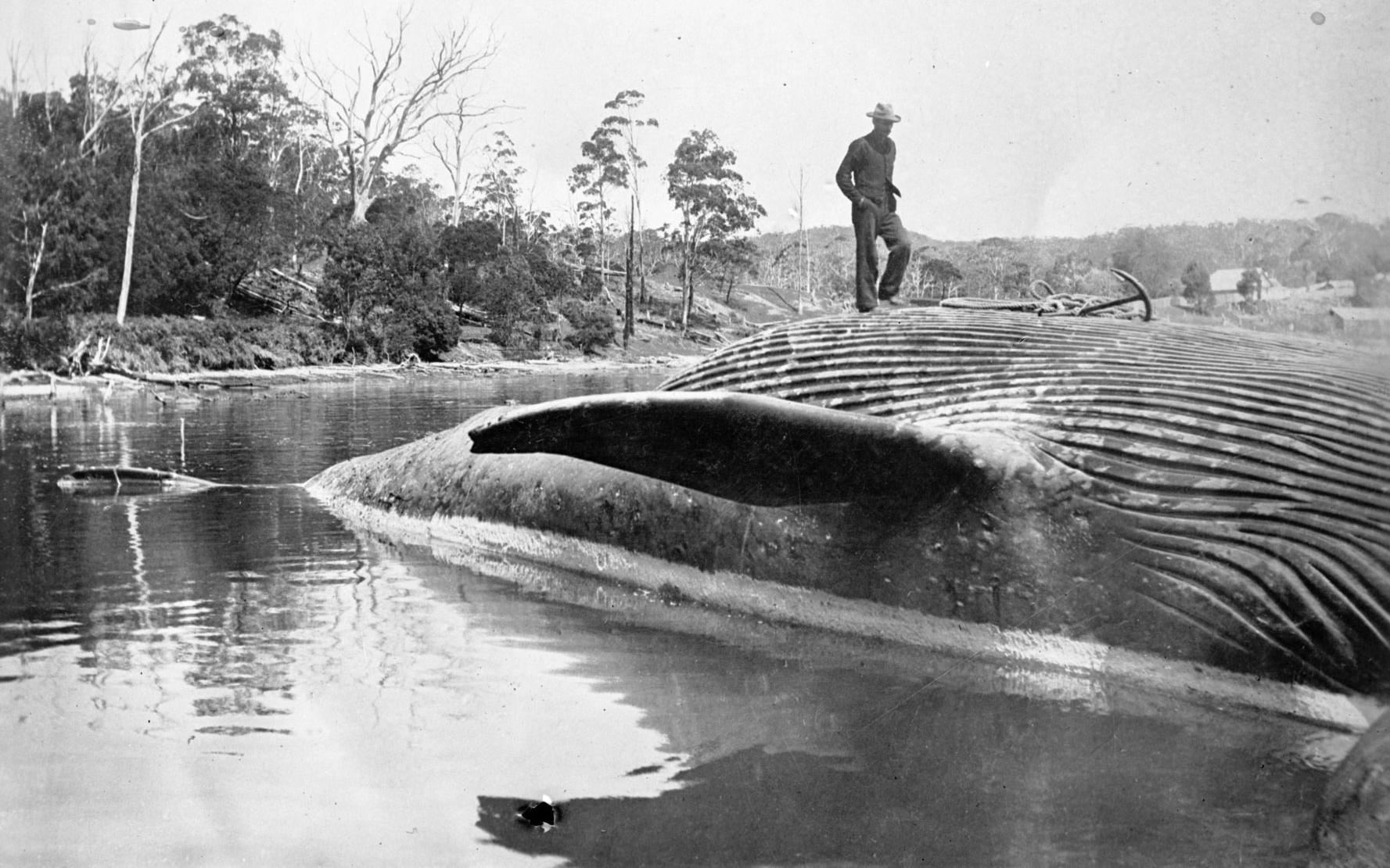Learning module:
The Spiritstone Saga
The Spiritstone Saga
5. Disease strikes!
1789: Smallpox epidemic
| WARNING: This page contains some difficult and potentially distressing content |

The Spiritstone leads you to an Aboriginal camp, where you are welcomed.
You cannot believe the devastation you see all around. Sick people are lying on the ground, crying out in agony.
‘The white colonists brought this on us!’ shouts one terrified old woman.
One of the younger Aboriginal men, Jarran, describes the condition.
‘The whitefellas call it “smallpox”. Our people have never experienced it before. It kills many of us. First comes a fever, then a headache and backache. You can be dead in just a few days. Seven out of ten of us who get it, die. In some places, a third of all Aboriginal people are dead.’
Jarran continues, ‘With so many dying, we lose family, we lose community leaders.’
You wish Jarran well and head to the Port Jackson settler community. There you speak with white colonists.
A tall friendly blond man called Paul Callahan is happy to talk to you.
‘It is a shame what’s happening to the original people of Australia. We Europeans don’t get as sick from these diseases. Europeans have had these diseases for generations so we are more immune to them,’ he says.
‘But how did the disease outbreak begin?’ you ask.
‘I’ve heard all kinds of rumours,’ says Paul. ‘Some say the disease came from the British colonists, others from French explorers, or even fishermen working from offshore islands in the north. And it’s not just smallpox. Other diseases will strike this land as well.’
He looks genuinely sad.
You retreat to your forest campsite. The Spiritstone glows orange — it has something to tell you.
‘Before the colonists there were at least 700,000, and possibly up to a million Aboriginal Australians. One hundred years later there were likely as few as 100,000 — mainly due to disease but also because of violence. The Europeans thought the Aboriginal people were dying out. But they didn’t. In 2018 there are over 800,000 again. And the disease smallpox was wiped out for good in 1977.’
‘Show your understanding by responding to this picture of a person with smallpox.’
Your task
- Describe this image by writing in the boxes










